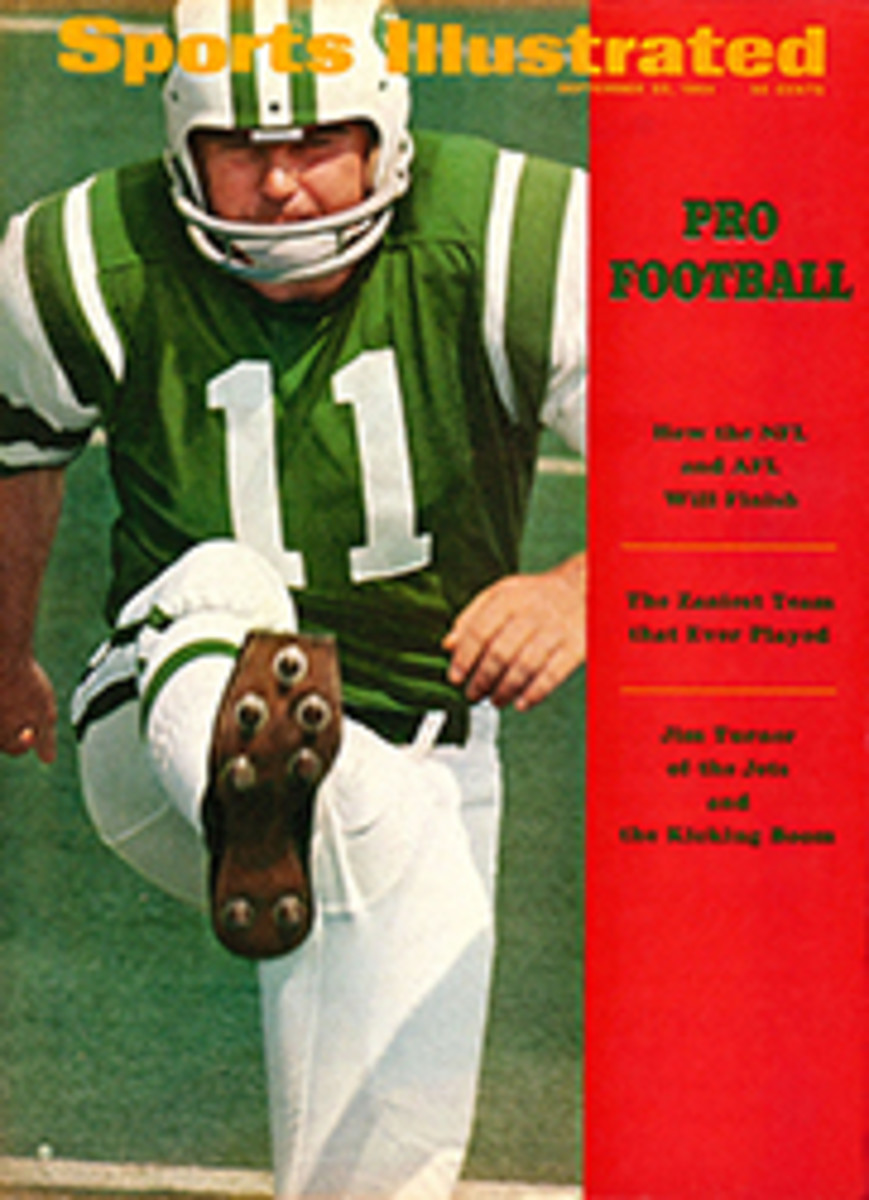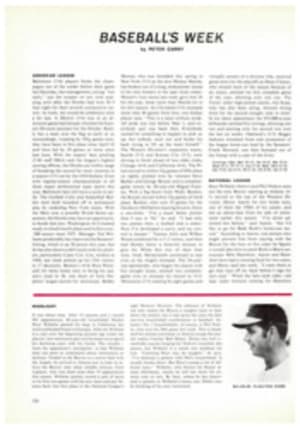
The mysteries of baseball and tennis are explored in new informal histories
Both Douglass Wallop's Baseball: An Informal History (W. W. Norton & Co., Inc., New York City, $5.95) and Malcolm D. Whitman's Tennis: Origins and Mysteries (Singing Tree Press, Detroit, $10) fall into the category of literary detection: the pursuit of elusive historical fact, including the oddities that turn up in attics and archives. Whitman's book examines certain little flukes of history. James I of Scotland, for instance, owed his death indirectly to tennis. In trying to escape his assassins, the king remembered too late that he had caused his escape route through a wall in a vault of the palace to be blocked off to keep his tennis balls from going through. More than a century before that, another monarch, King Louis X of France, is supposed to have died of a chill after playing tennis in a wood in Vincennes.
Less macabre but no less fluky are some of the incidents in Wallop's baseball history. Wallop is the author of the novel The Year the Yankees Lost the Pennant, which was converted into the Broadway musical, later a film, Damn Yankees. He tells the story of professional baseball's first 100 years. It is a story to attract a novelist: often glorious, sometimes funny and with a rich supply of heroes and villains. There was hero Harry Wright, the first to organize a professional team in 1869, a man whose toughest reprimand to his players was likely to be "you need a little ginger." There was the tragicomic Chris von der Ahe, a German immigrant who bought the St. Louis Browns and fractured fans with, "Velick der stuffings out of every team." There were villains galore in the roughnecks, gamblers and alcoholics who often ran the early games. And, of course, there was superhero Alexander Cartwright, the true inventor of baseball (SI, April 14), who established "the distance between bases at precisely 90 feet, a distance which has never changed in all the years since.... When, for example, a base runner sets out from first base to steal second, it is almost invariably a nip-and-tuck affair, so admirably is the distance between bases correlated to the limits of human speed and the power of the throwing arm. Had the distance been, say, 92 feet, stealing second would have been so difficult as to be seldom achieved. Had it been 88, stealing second might have been too easy."
Wallop is also fascinated by the "numerology" of baseball, "its absorption with the number three and its multiples thereof. Three strikes. Three outs. Three bases. Nine players. Ultimately nine innings. Three men in the outfield. Six in the infield, and, of course, 90 feet between bases.... Baseball magnates," concludes the author, "so far as one knows, have made nothing of this aspect of triplicity. Although they have not hesitated to identify their game with patria, they have so far resisted, at least in public, any temptation to say that it has the solid backing of the Trinity."
Tennis, of course, has always been (or has been thought to be) more staid than baseball, and Whitman's approach to his book Tennis: Origins and Mysteries is as earnest—and sometimes as interesting—as a competition at Wimbledon. If baseball is hung up on the mystique of number three, tennis is as wholly involved with the number 15, and Whitman, for years the American champion as well as an undefeated Davis Cup player, whose book was first published in 1932 in a limited edition, examines all theories extant, only to conclude that tennis' scoring system is still, and probably always will be, a mystery. He is much more confident in offering what is surely a plausible origin of the word "love" to signify "nothing." Dismissing the theory that it comes from a Scotch word luff or from the French word for egg l'oeuf, he suggests that it is a concept as old as the English language itself. As far back as 971 "we find the equivalent of the expression 'neither for love nor money' " which eventually gave way to " 'to play for love,' meaning 'to play for nothing' as contrasted with playing for money.
"It is quite usual to say, 'Let's play for love,' when we mean to play for nothing, and in view of the antiquity of this expression it would seem most natural for the English to have used the word to indicate no score when they first began to play the game." Right or wrong, the author worries and tracks down theories with the fervor of a bloodhound. Whitman is at his best, at least for pure doggedness, in a chapter called "The Catgut Mystery." Cat lovers everywhere will be relieved to learn that, where tennis is concerned, the cat's gut has been and always will be inviolate. "Catgut," writes the author earnestly and unequivocally, "whether used in tennis, in surgery, or in music, is made from the intestines of sheep." Moreover, "it takes parts of 50 or more sheep to string one racquet of the best quality.... In tracing the musical references the origin of the name was found. Catgut was originally called 'kitgut.' Kit was the old name for a small violin, and catgut meant at first 'violin string' or 'fiddle string.' " And that would seem to straighten the matter out once and for all, leaving the author free for such matters as the mystery of the double service, the origins of the let, the net, the ball, the racket and of course the origins of the game itself. For tennis buffs who wish to pursue the subject, there is a 79-page bibliography contributed by Robert W. Henderson.

